
Activities for Kids
by Gehta de Jager
Occupational Therapist at Nurture Health
Lockdown “Lekkerte” – Activities for Kids
The coronavirus pandemic has called for a national lockdown. Schools are closed and many of us are working from home. So, what to do during the times we are not working or doing homeschooling? Many of us have discovered that we have a lot more free-time on our hands with limited options to occupy that time and more significantly, a lot more time that our children do not have scheduled activities. It’s time to get creative! This is an uncertain time and it is normal and completely justified to feel anxious about the future. This pandemic has a lot of cons, that is for sure. However, there are some pros – we just need to look for them. One big positive during this time is that we get to spend a lot more time with our families. This is an ideal time to bond with our children and get to know them better.
“We were together. I forget the rest” – Walt Whitman
This article contains a list of activities to do during this lockdown time. After each activity the reference is placed in the form of a link. If you would like further information on a particular topic, you can just follow the link.
Build a Fort
Building a fort during rainy days inside is a favorite childhood activity. It’s a lot of fun and super easy to do. Instructions and ideas are given in the photos below:




Reference: https://www.facebook.com/MrsSpeechieP
Scavenger Hunt
What is more fun than having a scavenger hunt? It can be inside or outside, it can also be divided into categories e.g. kitchen, things that make a sound etc. Here are some ideas below:



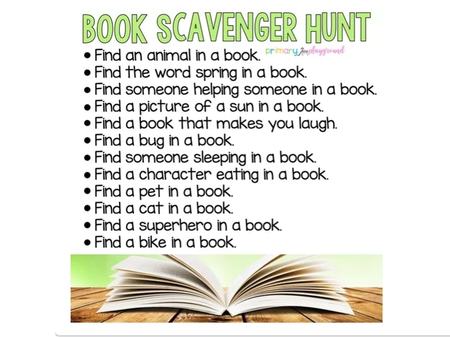




Reference: https://www.facebook.com/photo
Build an Obstacle Course
Obstacle courses are so much fun! The best thing about them is that they are so versatile and you can use almost anything as an obstacle. You can also make a themed obstacle course – with Easter coming up. Obstacle courses can be done inside or outside. The idea is to link a few activities together in a series in order to make them into an obstacle course. You can use chairs, pillows, tables, boxes, masking tape, pool noodles, hula hoops etc. Below are some ideas for creating your own obstacle courses:
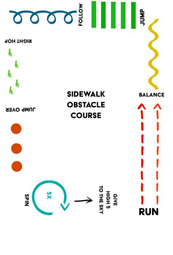



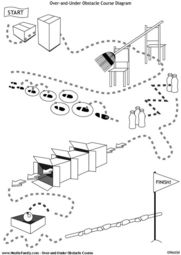



References:
https://www.facebook.com/MoreletaDuifies
https://za.pinterest.com/pin/578220039645132924/
https://za.pinterest.com/pin/462533824234165133/
https://www.teacherspayteachers.com
https://www.teacherspayteachers.com
https://twitter.com/LamiALjarbou
Hopscotch
Hopscotch is also an activity that is simple to do and does not require lots of preparation or resources.



References:
DIY Bowling
Fill up 10 plastic bottles with water (you can use food coloring to color the water) or stack plastic cups on each other in a tower formation. Then use any kind of ball to bowl over the “bowling pins”.

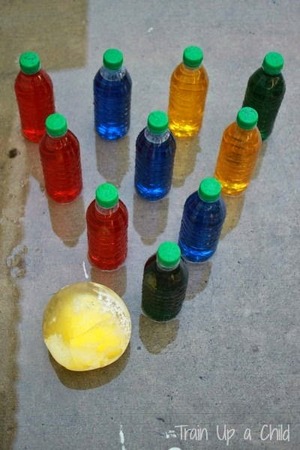
References:
https://www.facebook.com/MoreletaDuifies
Paper Plane Target Throw
Make a few holes in a newspaper, hang it in a doorway, fold a few paper planes and voila! There is a link attached that demonstrates 5 different ways of folding paper planes.

References:
Folding Paper Planeswym-1684239998042 https://i.pinimg.com
Mini Golf
Mini golf can also be played and constructed from using materials and toys available in the house. Below are a few ideas.



https://megganspicer.wordpress.com
https://kellygenelife.wordpress.com
Balloon Tennis
Use paper plates and popsicle sticks to make rackets. Blow up a balloon and Bob’s your Uncle! Balloon volley ball can also be played, then you just take away the rackets and play with hands. See how many you can do without the balloon falling to the ground! A pool noodle can also be used as a racket while the balloon is attached with a string to prestick on the roof to create a “swingball” effect.

References:
https://www.sensorylifestyle.com
Horseshoes
Play horseshoes using paper plates with the center cut out and bottles filled with sand.
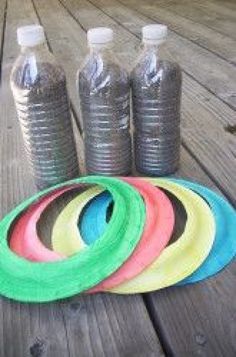
Shadow Drawing
Another fun and easy to prep activity. What you need is animal miniatures, white paper and drawing materials and the sun / a light to make a shadow.
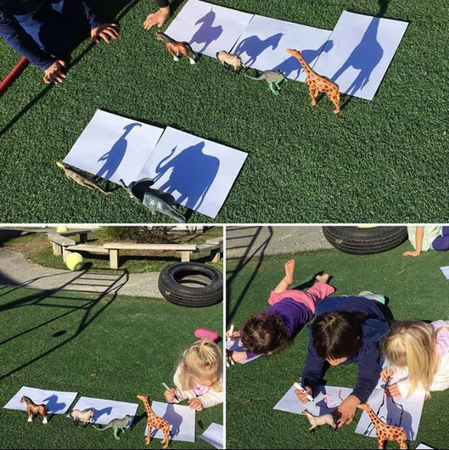
Activities with Clothespins
Activities for child stimulation don’t need to consist of expensive materials – clothespins can be used. Instead of the coloured pompoms, cotton balls can be used.



References:
https://www.facebook.com/MoreletaDuifies1
https://www.facebook.com/MoreletaDuifies2
http://missbananapants.blogspot.com
Fine-Motor Fun
These activities can be done with flat pebbles, smarties, M&Ms, rocks, stickers, rolled balls of playdough, buttons, uncooked popcorn kernels, lentils or beans.


References:
Emotional Intelligence Activities
During these trying times it is more important than ever to help our children learn how to process difficult emotions. Children experience the same wide range of emotions that adults do, however, they often lack the emotional vocabulary to express their emotions. Thus, we often see “acting out” behavior as they attempt to express their emotions. The activities that will be elaborated on under this heading will discuss activities that help in emotional identification and also activities that help to develop healthy coping strategies in order to regulate emotions. Developing emotional intelligence in children is also an important social skill as it is important to be able to identify emotions in others and adjust behavior accordingly. It also facilitates the development of empathy.
Emotional Identification
Experiencing intense emotions can be overwhelming to children, and by giving the emotion a name it already gives the emotion less power and gives a form of release. It is important that your child understands that it is okay to feel angry, sad, disappointed etc., but that what is done with the emotion is what matters. Identifying the emotion can also help the child select an appropriate coping strategy. Activity ideas for emotional identification are listed below. Further, if you google “emotional identification for kids” you can find lots of other examples.

Reference: http://www.arvindguptatoys.com
Emotional Identification: Emotion Faces and Activities
In order to facilitate emotional identification and awareness you can point to one of the pictures and ask the child how they think the character in the picture is feeling. You can ask them why they think that. You can then ask the child if they can think of a time where they felt that way. You can then brainstorm ideas of what the child can do when they feel a certain way in order to feel better.
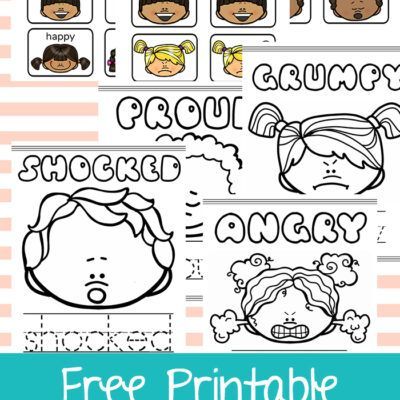


References:
Download the Free Printable Emotion Faces
Download theFree Monster Emotion Faces
Coping Strategies
Learning how to regulate emotions is a very important skill that is often overlooked. Coping strategies are what we use in order to deal with intense or unpleasant emotions and situations. We can make use of poor coping strategies or good coping strategies. Examples of poor coping skills are yelling, being violent, blaming others etc. Examples of good coping skills are taking deep breaths, exercising, listening to music, drawing etc.
Teaching children healthy coping strategies will set them up for success in life and help them develop into healthy, confident, balanced and empathetic human beings. Here are a few ideas for effective coping strategies. If your child is feeling sad, angry etc., let them identify what they are feeling and also help them to choose a coping strategy. This teaches them that they are able to take control of their emotional well-being which will also improve their self-esteem. It is also important to remember that children still very much rely on their parents for support, and this is still 100% okay. Children need their parents to help them regulate
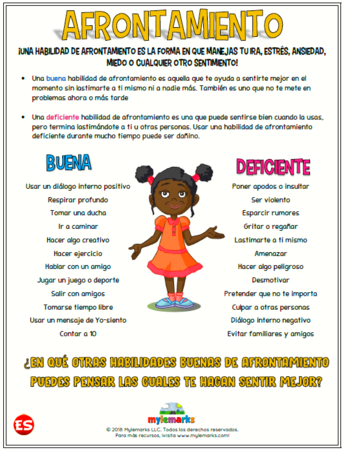


References:
https://www.filefolderheaven.com
https://www.socialemotionalworkshop.com
Coping Strategies: 10 Ways to Calm Down & How to Nurture a Child’s Mental Health
Coping Strategies are not a one-size-fits-all. What works for one person, may not work for another. Therefore, it is important to guide your child to discover coping strategies that work for her. A few examples are listed below.


References:
https://www.teacherspayteachers.com
Coping Strategies: Coping Tools – What Helps Me A-Z of Coping Skills
Below are more examples of coping strategies. Sometimes it takes a bit of trial and error before finding a strategy that works.
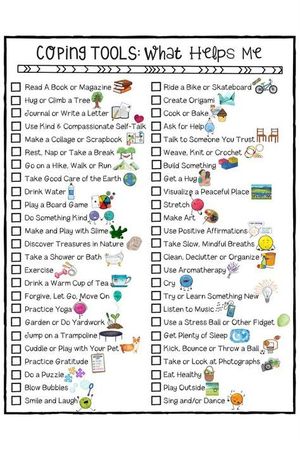

References:
https://www.teacherspayteachers.com
Games to Facilitate Emotional Well-Being
Feelings Dice Game
All you need is a die. Throw the die and ask the question corresponding to the number that was thrown. Go down the list and ask all the questions listed under each number as the game carries on. You can even add your own questions.

Making a Coping Strategies Fortune Teller
Follow the instructions stipulated on the image below in order to make your fortune teller.

References: https://biglifejournal.com
How Do You Feel Boardgame
This game is very easy to play. Throw the die and move the correct amount of spaces. A question will be answered depending on where the player lands. If the player lands on a block with writing on it, the question will be read and answered. It the player lands on a facial expression, the player will then say how the think the person in the picture is feeling as well as a time that they felt the same way.

References: https://en.islcollective.com





